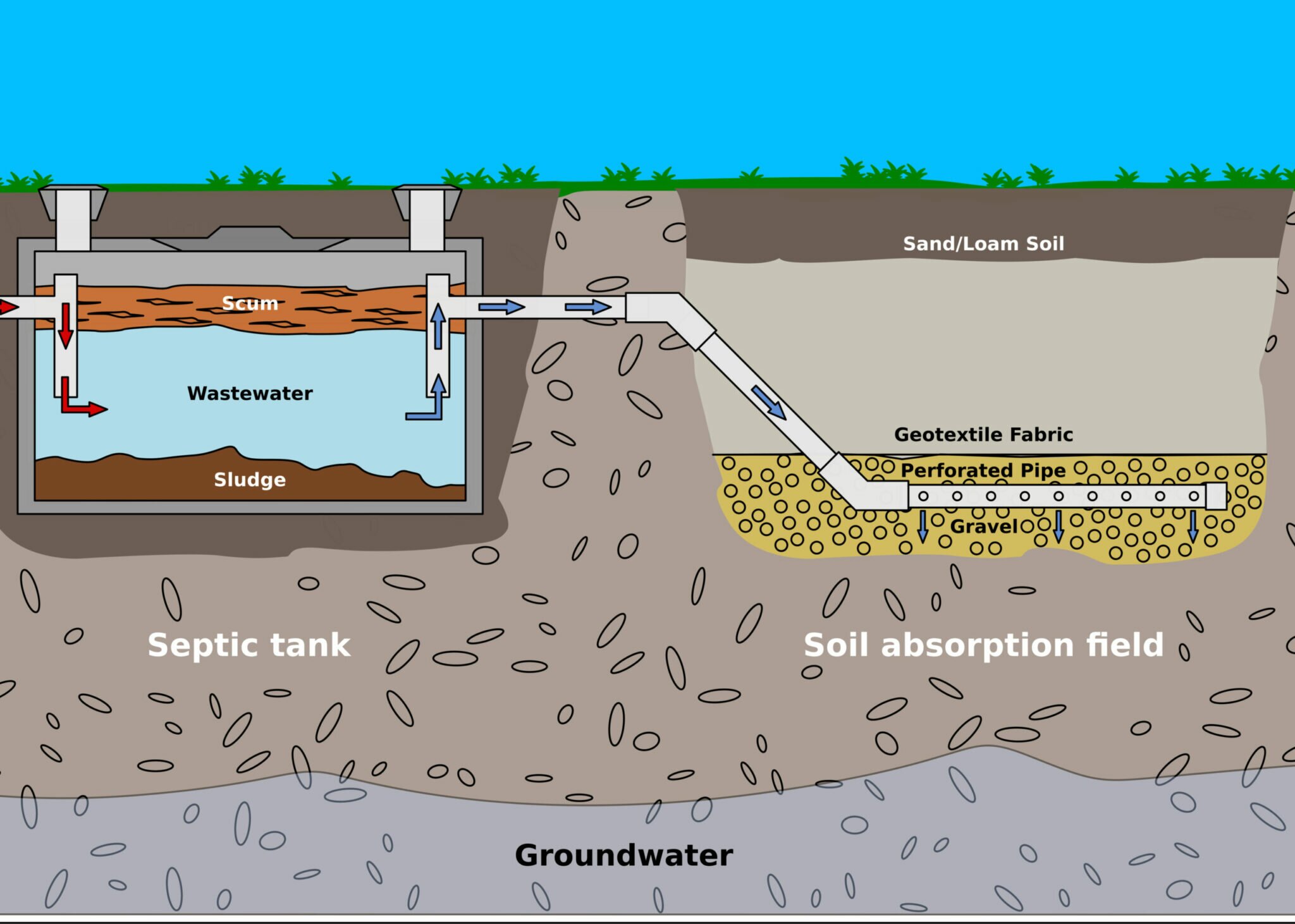Septic systems provide a decentralized way to treat and dispose of household wastewater in areas without access to centralized sewer systems. Over 20% of homes in the U.S. rely on these underground wastewater treatment systems. But how exactly does a septic system work to process waste and prevent groundwater contamination? This article provides a detailed overview of septic system components and operation.
Septic System Basics
A septic system consists of two main parts: the septic tank and the drainfield. The septic tank is a large buried container made of concrete, polyethylene, or fiberglass. It holds and partially treats wastewater from the home before it flows to the drainfield for further treatment and dispersal.
The drainfield, also called a leach field or soil absorption field, provides additional treatment as the wastewater filters through soil layers. Traditional drainfields utilize a series of perforated pipes or chambers buried in gravel-filled trenches, while advanced systems may filter water through sand filters or other media.
How the Septic Tank Works
The septic tank performs three key functions:
- Separates solids from liquid
- Provides initial treatment
- Stores and slowly releases wastewater
Here’s how it accomplishes these functions:
Separation of Solids
As wastewater enters the tank, solids settle to the bottom forming a sludge layer, while oils and grease float to the top as scum. This allows much of the solids to be separated from the liquid effluent that will flow to the drainfield.
Initial Treatment
Anaerobic bacteria in the tank work to break down and digest organic solids. This digestion and separation process helps reduce sludge volume and also makes the remaining effluent easier to treat as it moves through the drainfield.
Storage and Slow Release
The septic tank provides temporary storage to allow solids time to settle and begin breaking down between periodic pump outs. The tank’s baffles and outlet design then provide controlled, gradual release of the clarified effluent to the drainfield. This prevents overloading the drainfield.
Septic Tank Inspection and Pumping
To maintain proper operation, septic tanks should be periodically inspected and pumped when needed, generally every 3-5 years. Signs a tank needs pumping include:
- Sludge depth over 1/3 of the tank volume
- Scum layer exceeding 6 inches thick
- Foul sewage odors from vent pipe
- Slow drains or plumbing backups
- Standing water or wet spots over drainfield
Pumping removes excess solids so new wastewater can flow in and proper treatment levels are maintained. Professional inspectors use tools to measure sludge and scum accumulation and make pump out recommendations.
How the Drainfield Works
The drainfield provides crucial secondary treatment of wastewater from the septic tank. Here’s how a conventional drainfield works:
-
Effluent flows from the outlet tee or pump basin into a distribution box.
-
The distribution box splits and directs effluent into several buried perforated pipes that make up the leach field.
-
Effluent trickles out through the perforations and gravel into the trench soils.
-
As effluent percolates down through the soil, physical, chemical, and biological processes treat it further.
-
Finally, the fully treated water reaches the groundwater or subsurface soils.
Key treatment mechanisms include:
- Filtration – Soil filters out particles and microorganisms
- Adsorption – Soil binds and immobilizes contaminants
- Aerobic bacterial degradation – Bacteria digest pathogens, organic matter and nutrients
- Ion exchange – Soil exchanges molecules with effluent
- Evapotranspiration – Effluent evaporates from soil into air
Proper siting, installation, and maintenance ensures the drainfield provides effective, long-term wastewater treatment.
Alternative Drainfield Designs
While gravel trenches are the most common, advanced drainfield options can enhance treatment in some situations. Examples include:
- Sand filters
- Peat filters
- Constructed wetlands
- Evapotranspiration beds
- Pressurized shallow narrow drainfields
- Mound systems
- Gravel-less drainfield pipe systems
Alternative drainfields are used for sites with high groundwater, shallow bedrock, or very poor soils. An expert can recommend the right system design for specific site conditions.
System Add-Ons and Replacements
Additional components that may be part of a septic system include:
- Effluent filters – Help keep solids out of the drainfield
- Pump/lift stations – Lift effluent to a higher drainfield
- Aerators – Add oxygen to help break down wastes
- Disinfection systems – Kill pathogens before drainfield
For older failing drainfields, replacements like in-ground pressure vessels that time-dose effluent can extend system life.
Septic System Care and Maintenance
With proper care and maintenance, a septic system can provide effective wastewater treatment for decades. Key maintenance tips include:
- Inspect annually and pump tank as needed
- Don’t dispose of harsh chemicals or drain cleaners
- Conserve water to avoid overloading the system
- Don’t drive or park vehicles on the drainfield area
- Keep stormwater diversion ditches around the field clear
- Maintain native grass cover over the field
- Don’t plant trees/shrubs or build structures over the drainfield
By understanding how all the components interact to treat and disperse wastewater, homeowners can keep their septic systems operating safely and effectively. Performing regular maintenance also protects home investment value.
